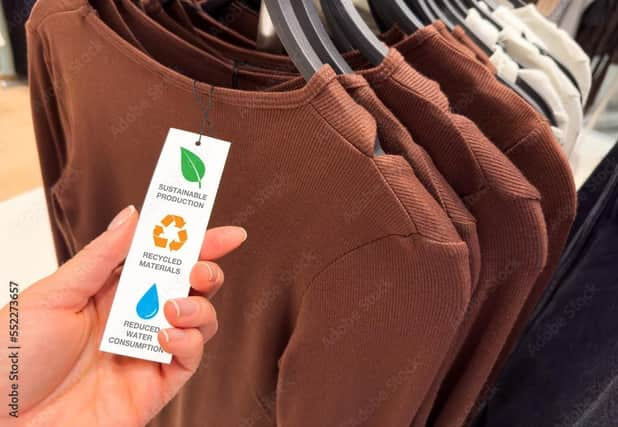Going Green: Being fashionable as well as sustainable


I’ve covered things like swap parties and using second hand sites on my website: https://onehome.org.uk/topics/lifestyle/shopping/how-can-i-buy-less-and-save-money-when-it-comes-to-clothes-and-fashion/
It’s also worth taking a look at www.sustainablefashionweek.uk they’ve got up to date details on the site so you can find an event with preloved clothes near you wherever you are in he country.
Advertisement
Hide AdAdvertisement
Hide AdWhile we know second hand is a great option, there’s also plenty that can be done when you buy new clothes to help the environment too.
Firstly, take a look at where you’re shopping. Plenty of the bigger fashion brands – like Marks and Spencer and H&M and others on the High Street have sustainability sections on their website and often produce annual sustainability reports.
There’s also something called the Fashion Transparency Index https://issuu.com/fashionrevolution/docs/fashion_transparency_index_2023_pages
This contains information on public disclosure of fashion brands environmental policies, practices, and impacts across their operations and supply chains. This is a fabulous resource as it has brands from Gucci to Tesco in it.
Advertisement
Hide AdAdvertisement
Hide AdThink about sustainable fashion too – buying preloved or hiring clothes for special occasions rather than buying will not only save you money and storage space but the environment benefits too.
Next take a look at the labels of the clothes you want to buy. More often than not they’ll have information about where exactly in the world they were manufactured – which will give you an idea of the miles they’ve travelled to get on the rail in your local shop – but they also contain information on what they’re made of.
If there’s one piece of advice I’d suggest, it’s to avoid polyester at all costs. It’s downcycled from plastic and once it’s made into polyester it can’t be recycled again so anything that has polyester in it will likely end up in land fill.
The fabrics you want to look for are things like bamboo – which is sustainable and recyclable. Viscose is made from wood pulp. Wool, hemp, organic and sustainable cotton and linen are all worth looking out for too. Cotton’s a natural product but it can use a lot of water when it’s being produced so make sure you look for the words ‘organic’ and ‘sustainable’.
Advertisement
Hide AdAdvertisement
Hide AdAuthor and broadcaster Lucy Siegle wrote a brilliant book: “To Die For: Is Fashion Wearing Out The World?” It can be ordered at your local book shop so if fabrics and fashion sustainability are something you feel passionately about, it’s definitely worth getting a copy.